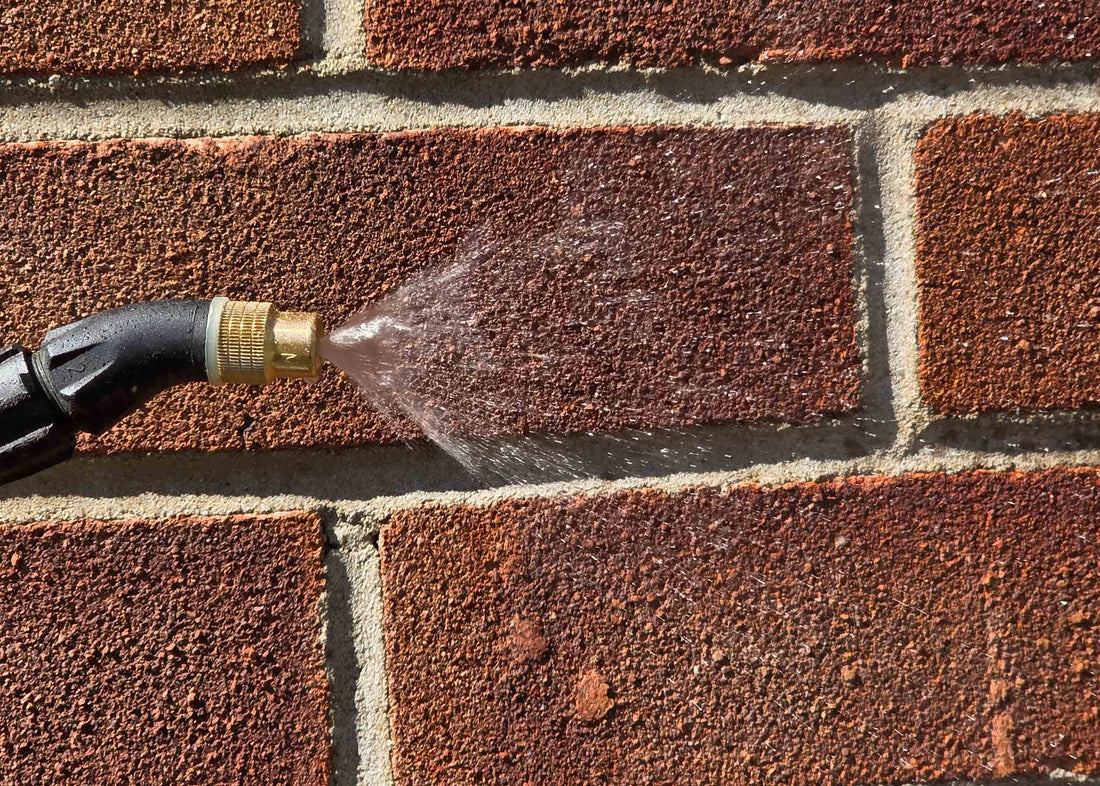
What are different Spaying Pressures for?
Share
The straight answer is that spraying at different pressures gives different results on how the liquid is disbursed.
Most people tend to pump their sprayer to the maximum pressure as this seems like the most efficient thing to do, the general thought is that the pressurised air is just going to push the liquid out - so the more air, the longer the spraying time before having to re-pump and re-pressurise. Also, with many sprayers not being fitted with a pressure gauge, there isn't the ability to see the pressure within the tank, so one just pumps until you can't fit any more air into the tank.
But this isn't the best thing for your spraying.
If you are using a sprayer with a pressure gauge, such as our MAX 2 or RS backpack sprayers, you can see the pressure within the tank, making it easy to select the required pressure. If there isn't a gauge then you can either use a constant pressure valve which will only allow the liquid to be dispersed at a set pressure or you can vary the pressure you put into the tank. Remember, you don't have to fill the tank to its maximum pressure, a few pumps of the compression handle will probably be enough to raise the pressure to at least 1 bar which is ample, and preferable, for the spraying of many types of liquid.
But this isn't telling why we should be spraying at different pressures -
for this, try to think about how the sprayer works.
You pour a liquid into the tank followed by air to act as the propellent. The more air that you force into the tank, the greater the pressure and the quicker the liquid will be forced out through your spray nozzle.
This gives two results; firstly the liquid is forced out very quickly which means both the liquid and air will need to be replenished regularly, and secondly as the liquid is forced through the nozzle at great pressure, the liquid goes through high atomisation thus producing very small droplets which can lead to wasting product, through drifting and having to spray areas twice to ensure ample coverage. For many types of product, these small droplets are not desired and larger droplets are preferred to allow the product to work at maximum effectiveness.
For general spraying we recommend a spray pressure of between 1 - 1.5 bar. So if you are spraying garden treatments such as weed killers, moss killers or plant protection products then this lower pressure gives, amongst other things, a far larger droplet size which is much more effective than the mist dispensed with higher pressures. Another benefit is it only takes a few strokes of the compression handle to reach the lower pressure and the spray time is much longer than when using higher pressure.
During a recent spraying application of moss killer, we were using our MAX 2 sprayer and only pressurised to around 1 bar (even when using the 2.5 metre telescopic lance), it took around 10 pumps of the compression handle to initially reach the desired working pressure and we were able to produce a constant spray for around 3.5 minutes, then another 4 pumps to get back to the starting pressure to repeat the process. None of this was hard work and the spray pattern was perfect.
You may have noticed that we mentioned a telescopic lance and, yes, you can also use our telescopic lances or lance extensions at lower pressures. It takes 0.1 bar for every metre you are lifting the liquid so if using a longer lance then you will have to increase the working pressure to allow for this. However, if using our longest lance of 5.4 metres and holding it vertically then you will have, at maximum, 7.5 metres to the nozzle tip (allowing for the lance, operator height at maximum reach, and having the spray tank on the floor) which is around 0.8bar so instead of having your tank at 1bar you can pressurise to 2bar and have the same spray pressure at the nozzle. However, remember that it is very rare to be holding a lance vertically and normally the operator has the spray tank on their back (as with a knapsack or backpack sprayer) or hanging from their shoulder both of which will reduce the distance the liquid is being lifted when compared to having the tank on the floor.
When should you use higher pressures? If using long spray lances then a slightly higher pressure may be beneficial but other than this, only if the application instructions for the liquid state a preferred spray pressure. This is normally when a liquid has a higher than normal viscosity (thickness) so needs the extra pressure to physically push the liquid through the nozzle. This may also require a larger nozzle but this is a topic for another blog.
So, if you are worried that a full tank of air doesn't last very long - reduce the pressure.
